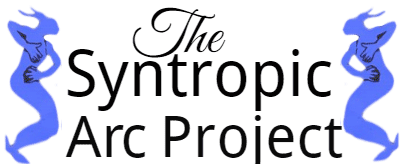
In 2001, President George W. Bush issued an executive order banning federal funding for new sources of stem cells developed from preimplantation human embryos. The action stalled research and discouraged scientists.
Five years later, a Kyoto University scientist, Shinya Yamanaka, and his graduate student, Kazutoshi Takahashi, re-energized the field by devising a technique to “reprogram” any adult cell, such as a skin cell, and coax it back to its earliest “pluripotent” stage. From there it can become any type of cell, from a heart muscle cell to a neuron.
The breakthrough sidestepped the embryo controversy, offering researchers an unlimited supply of stem cells. Dr. Yamanaka shared the 2012 Nobel Prize in Physiology or Medicine for reprogramming mature cells into what are now called induced pluripotent stem cells, or iPS cells. Still, the march toward new treatments has been halting.
Dr. Yamanaka directs Kyoto University’s Center for iPS Cell Research and Application. He also leads a small research lab at the Gladstone Institutes, affiliated with the University of California, San Francisco, where his group studies the molecular mechanisms that underlie pluripotency and the factors that induce reprogramming.
I interviewed him recently in San Francisco. Our conversation has been edited for length and clarity.
Q. There has been great enthusiasm and confidence for nearly 20 years that the use of stem cells will lead to powerful new treatments for a range of diseases. Now, 10 years after your discovery, what treatments have been developed?
A. We are still in the early stages. In 2014, Dr. Masayo Takahashi and her colleagues at the Riken Center for Developmental Biology had great success using iPS cells to treat macular degeneration.
They took skin cells from a 70-year-old patient and derived iPS cells from them. They then differentiated the stem cells (directed them “back down” the normal developmental path) to become adult retinal cells. These were transplanted into the patient’s eye to treat the disease. That was a huge success. She sees much better now.
Have more patients been treated?
Before the transplantation for the second patient, we checked the genome sequence of the patient’s iPS cells and we identified a mutation in the cells. So we did not proceed.
The pluripotent stem cells [have the] ability to proliferate rapidly and infinitely. But it’s a double-edged sword. After multiple cell cycles, the chances of mutations increases. This could include mutation to produce an oncogene that can cause cancer.
So these treatments are now on hold?
Yes. We are developing allogenic stem cell lines — stem cells from donors. They would not be the patient’s own, but compatible cells to transplant into the patient, much like blood transfusions with compatible blood types.
We are performing rigorous quality tests, including sequencing the stem cells’ genomes to be sure the cells are free from cancer-causing mutations. We perform tests on adult retinal cells generated from these stem cells to assure that they function as normal retinal cells, and those cells are transplanted into mice or rats for a year to assure they are safe.
That’s very different from the way stem cell treatments were originally described to the public. It was going to be “personalized” medicine — using the patient’s own stem cells to generate the adult cells without risk of rejection.
Well, we realized that it would take a great deal of time and would be unrealistically expensive to carry out the deep sequencing and animal studies for each patient’s cells.
How many compatible donor cell lines do you expect will be needed to cover the Japanese population?
Not that many. One particular line — just one — can work for 17 percent of the Japanese population. We estimate that altogether about 100 lines will suffice for the 100 million people in Japan.
How many lines would be needed for the more diverse United States population?
We would need only about 200 lines.
Was the promise of stem cells overstated?
In some ways, yes, it is overstated. For example, target diseases for cell therapy are limited. There are about 10: Parkinson’s, retinal and corneal diseases, heart and liver failure, diabetes and only a few more — spinal cord injury, joint disorders and some blood disorders. But maybe that’s all.
Why so few?
We have more than 200 types of cells in our body. But the diseases I described are caused by loss of function of just one type of cell. Parkinson’s disease is caused by failure of very specialized brain cells that produce dopamine. Heart failure is caused by loss of function of cardiac heart cell.
So, that’s the key. We can make that one type of cell from stem cells in a large amount, and by transplanting those cells, we should be able to rescue the patient. But many other diseases are caused by multiple types of cell failures, and we cannot treat them with stem cell therapy.
What are the prospects for the other nine or so diseases that you say stem cell treatments can address?
I think it’s likely that clinical trials will be well underway for many of these diseases in the next decade.
Your discovery has not entirely replaced embryonic stem cells for potential treatments.
Different applications work better under different conditions.
How important is the new strategy to reprogram adult cells back, but not all the way back to stem-cell stage — more to a state that is still somehow specific to the organ the cells came from?
That is called direct cellular reprogramming, and it might work better than iPSC if, say, we need to replace all the cartilage in an elderly person’s knee. But iPS would probably be the choice if we are treating a younger person who only has a small lesion in the knee. We could make good cartilage from iPSCs and transplant that purified cartilage to that small lesion.
What are your biggest concerns about the future of stem cell treatments?
I think the science has moved too far ahead of talk of ethical issues. When we succeeded in making iPS cells, we thought, wow, we can now overcome ethical issues of using embryos to make stem cell lines.
But soon after, we realized we are making new ethical issues. We can make a human kidney or human pancreas in pigs if human iPS cells are injected into the embryo. But how much can we do those things?
It is very controversial. These treatments may help thousands of people. So getting an ethical consensus is extremely important.
What is needed before patients can receive stem cell treatments for the 10 or so diseases you identified?
Time and money.
You know, my father had a small factory. He injured his leg in the factory when I was in junior high. He had a transfusion, and he got hepatitis C. He passed away in 1989.
Twenty-five years later, just two years ago, scientists developed a very effective cure. We now have a tablet. Three months and the virus is gone — it’s amazing. But it took 25 years.
iPS cells are only 10 years old. The research takes time. That’s what everybody needs to understand.

